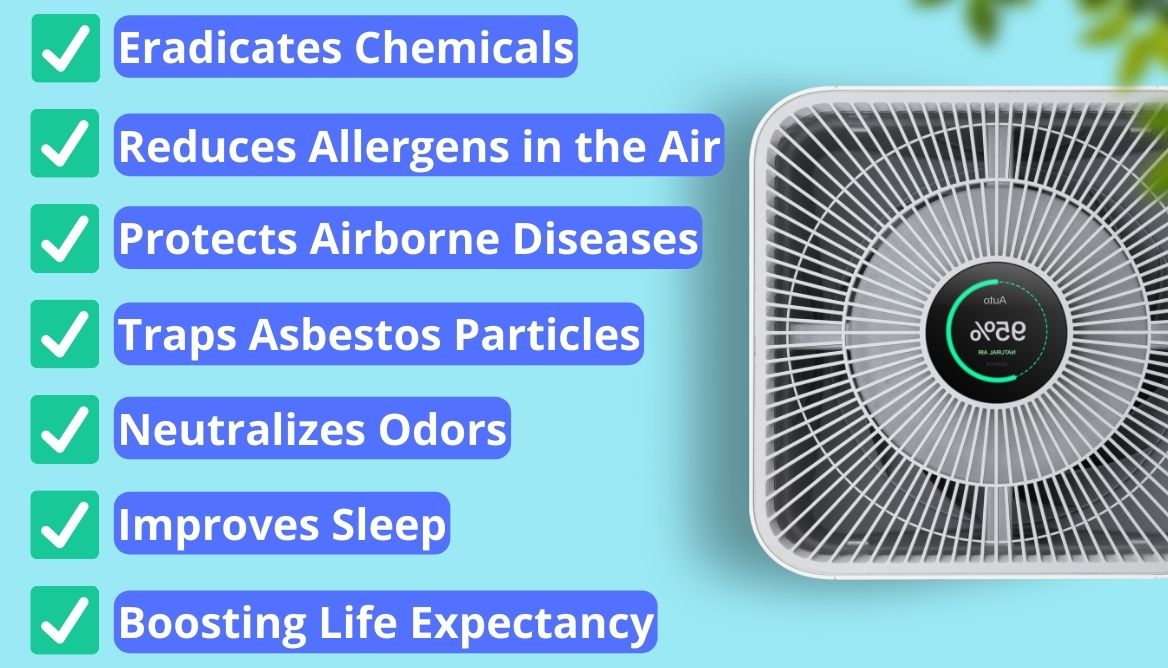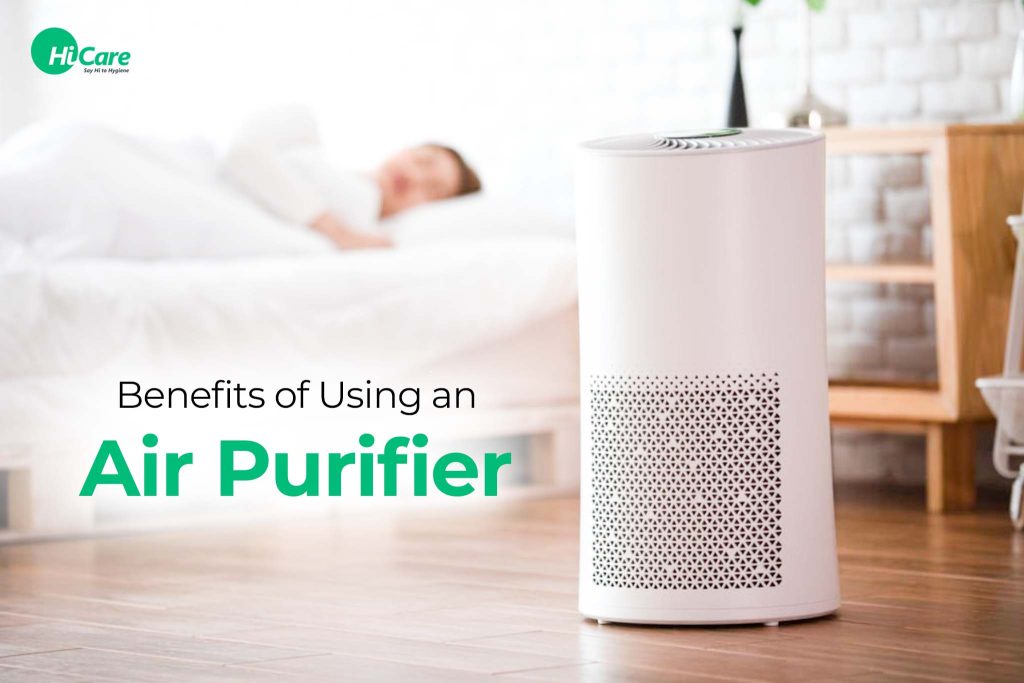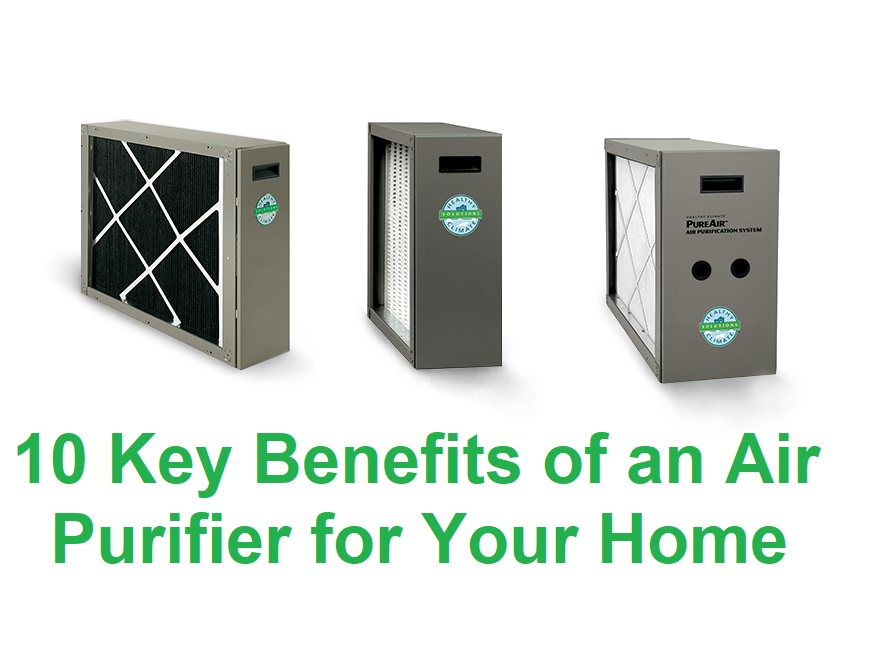Benefits Of An Air Purifier In Your Home

Many homeowners experience that persistent feeling of stuffiness or noticing allergy symptoms worsening indoors, even when they keep their homes relatively clean. You might find yourself sneezing more, struggling with a scratchy throat, or feeling fatigued despite getting enough sleep. This can often be attributed to poor indoor air quality. While opening windows can help, it's not always practical due to weather, pollen, or outside noise. This is where an air purifier comes in, but sometimes, even with an air purifier, the problem persists. Let's explore how to troubleshoot why your air purifier might not be living up to its promises.
Diagnosing Air Purifier Issues: A Step-by-Step Guide
Before assuming your air purifier is faulty, let's systematically check a few common culprits. We'll start with the simplest fixes and move towards more complex ones.
Step 1: Is It Even On? (The Obvious Check)
Yes, it sounds simple, but it's the first thing to verify! Make sure the air purifier is plugged in securely and that the outlet is working. Test the outlet with another appliance to confirm. Sometimes, a power surge can trip a breaker, so check your circuit breaker box as well. Ensure the power button is actually engaged, and look for any indicator lights that signal the purifier is running. Some purifiers have a sleep mode that significantly reduces fan speed, which might make you think it's off when it's not.
Step 2: Filter Check – The Most Common Culprit
The filter is the heart of your air purifier. A clogged or dirty filter severely reduces its effectiveness. Here's how to check and address it:
- Turn off and unplug the air purifier. This is crucial for safety.
- Locate the filter compartment. Refer to your air purifier's manual if you're unsure where it is.
- Remove the filter. Pay attention to how it's oriented so you can replace it correctly.
- Inspect the filter. Is it visibly dusty, dirty, or discolored? A heavily soiled filter is a major indicator of a problem.
DIY Fix:
Depending on the type of filter, you have a few options:
- Pre-filters (Washable): Many air purifiers have a pre-filter designed to catch larger particles like dust and pet hair. These are often washable. Rinse it under running water until clean, then let it air dry *completely* before reinstalling.
- HEPA Filters (Non-Washable): HEPA (High-Efficiency Particulate Air) filters are not washable. Attempting to wash them will damage the filter material and render them ineffective. If a HEPA filter is visibly dirty, it needs to be replaced. Check your manufacturer's recommendations for replacement intervals (usually every 6-12 months, depending on usage and air quality).
- Activated Carbon Filters: These filters absorb odors and gases. Like HEPA filters, they are typically not washable. They also need to be replaced periodically, usually every 3-6 months, depending on usage and the severity of odors in your home.
Important: Always consult your air purifier's manual for specific filter cleaning and replacement instructions. Using the wrong cleaning method or neglecting to replace filters can significantly reduce the purifier's performance and potentially damage the unit.
Step 3: Airflow Obstruction
Even with a clean filter, the air purifier might not be working effectively if airflow is obstructed. Here's what to check:
- Placement: Is the air purifier placed in an open area, or is it crammed into a corner or behind furniture? Air purifiers need adequate space around them to draw in and release air effectively. Ideally, place the unit in a central location in the room, away from walls and obstructions.
- Air Vents: Inspect the air intake and exhaust vents on the purifier itself. Are they blocked by dust, debris, or anything else? Use a soft brush or vacuum cleaner with a brush attachment to gently remove any obstructions.
- Room Size: Is your air purifier appropriately sized for the room? Air purifiers are rated for specific room sizes (e.g., "suitable for rooms up to 300 square feet"). Using a purifier that's too small for the room will result in inadequate air cleaning. If you have a large room, you may need a larger purifier or multiple units.
Step 4: Seal Integrity
An often-overlooked aspect is the seal around the filter. If the filter doesn't fit snugly or the seals are damaged, air can bypass the filter altogether, rendering it ineffective. Inspect the filter compartment for any gaps or cracks. Make sure the filter is properly seated and that the seals are intact. If the seals are damaged, you may be able to purchase replacement seals from the manufacturer or a parts supplier.
Step 5: Sensor Issues (If Applicable)
Some advanced air purifiers have sensors that detect air quality and automatically adjust the fan speed. If these sensors malfunction, the purifier may not be responding correctly to changes in air quality. For example, it might run at a low speed even when the air is polluted. Consult your air purifier's manual to see if it has a sensor cleaning function. Some models require you to gently clean the sensor with a cotton swab. If the sensor continues to malfunction after cleaning, it may require professional repair.
Step 6: Odor Problems
If you're primarily concerned about odors, ensure your air purifier has an activated carbon filter. HEPA filters primarily remove particles, not odors. If you have an activated carbon filter and it's still not effectively removing odors, it may be time to replace it. Also, consider the source of the odors. An air purifier can help, but it's not a substitute for addressing the underlying cause (e.g., mold, pet accidents, poor ventilation). For example, cleaning out the litter box more frequently or addressing a moisture problem can significantly improve odor control.
When to Call a Professional
While many air purifier issues can be resolved with simple DIY fixes, some problems require professional attention. Here are some scenarios where you should contact a qualified appliance repair technician:
- Electrical Issues: If the air purifier is sparking, smoking, or making unusual electrical noises, immediately unplug it and call a professional. Do not attempt to repair electrical problems yourself.
- Motor Problems: If the fan motor is making loud or unusual noises, or if the fan is not spinning properly, it may indicate a motor malfunction. Replacing a motor is a complex repair that should be left to a professional.
- Sensor Malfunctions (Beyond Cleaning): If cleaning the sensor doesn't resolve the issue, the sensor may need to be replaced or recalibrated, which requires specialized tools and knowledge.
- Unit Still Not Working After Troubleshooting: If you've followed all the troubleshooting steps and the air purifier still isn't working effectively, there may be an internal problem that requires professional diagnosis and repair.
- Warranty Concerns: If your air purifier is still under warranty, attempting to repair it yourself may void the warranty. Contact the manufacturer or an authorized repair center for assistance.
Maximizing the Benefits of Your Air Purifier
Once you've addressed any technical issues, here are some tips to maximize the benefits of your air purifier:
- Run It Regularly: For optimal air quality, run your air purifier consistently, even when you're not experiencing symptoms. Many people choose to run it 24/7.
- Close Windows and Doors: While fresh air is important, closing windows and doors when running the air purifier will prevent outside pollutants from entering the room and overwhelming the unit.
- Maintain a Clean Home: Regular cleaning, including vacuuming and dusting, will reduce the amount of pollutants in your home and help your air purifier work more efficiently.
- Avoid Smoking Indoors: Smoking indoors introduces a significant amount of pollutants into the air, overwhelming even the most powerful air purifiers.
- Consider Multiple Units: For larger homes, consider using multiple air purifiers to ensure adequate air cleaning throughout the space.
Long-Term Benefits
Remember that the benefits of an air purifier extend beyond just alleviating allergy symptoms. By removing dust, pollen, pet dander, mold spores, and other pollutants, an air purifier can contribute to:
- Improved Respiratory Health: Reducing exposure to airborne irritants can help alleviate symptoms of asthma, allergies, and other respiratory conditions.
- Better Sleep: Cleaner air can lead to better sleep quality by reducing congestion and discomfort.
- Reduced Odors: Air purifiers with activated carbon filters can effectively remove odors from pets, cooking, smoke, and other sources.
- A Healthier Home Environment: By removing pollutants, air purifiers create a cleaner, healthier living environment for you and your family.
By following these troubleshooting steps and maintenance tips, you can ensure that your air purifier is working effectively and providing you with the clean, healthy air you deserve. Don't hesitate to contact a professional if you encounter a problem you can't resolve yourself. Investing in clean air is an investment in your well-being.










